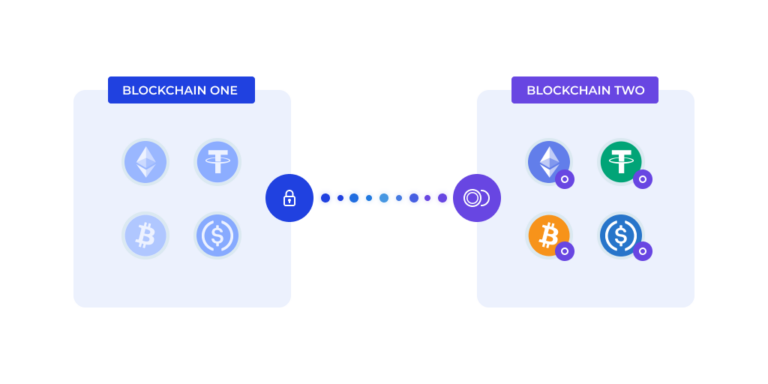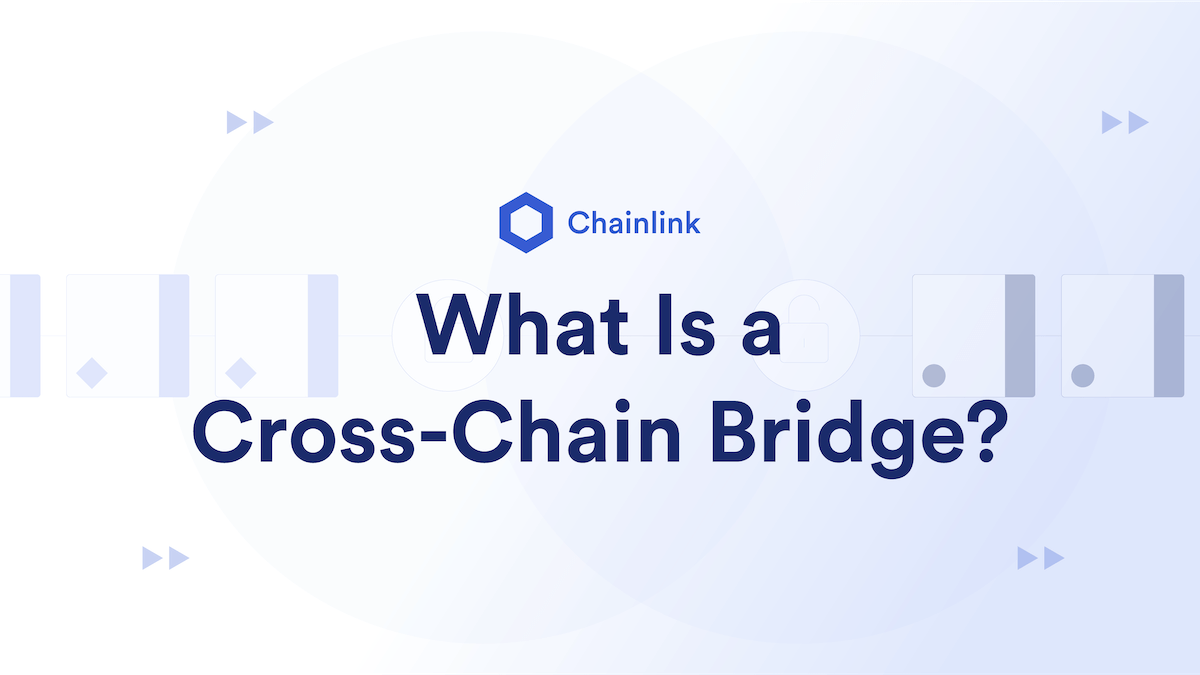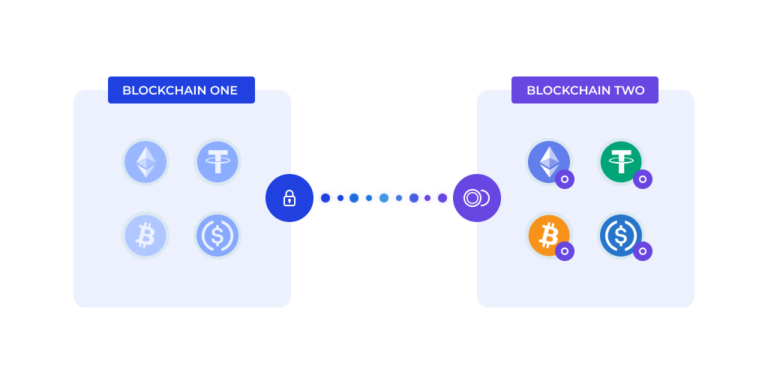
Essential Knowledge Cross-Chain Bridge Security
Essential Knowledge About Cross-Chain Bridge Security for Crypto Investors provides a comprehensive overview of the crucial security considerations surrounding these vital components of the cryptocurrency ecosystem. Cross-chain bridges, enabling the transfer of crypto assets between different blockchains, have become increasingly popular, but they also come with inherent risks. Understanding these vulnerabilities, and the measures to mitigate them, is essential for crypto investors to navigate the complex landscape of decentralized finance.
This guide delves into the intricacies of cross-chain bridges, examining their underlying technologies, common security vulnerabilities, and the critical steps investors should take to protect their assets. We’ll explore real-world examples of attacks, best practices for enhancing security, and the future trends shaping this rapidly evolving space.
Introduction to Cross-Chain Bridges
Cross-chain bridges are crucial components in the expanding cryptocurrency ecosystem. They facilitate the seamless transfer of digital assets between different blockchains, enabling users to move tokens or cryptocurrencies from one blockchain to another without the need for intermediaries. This interconnectedness allows for greater utility and broader adoption of cryptocurrencies across various platforms.Understanding how cross-chain bridges function is paramount for crypto investors, as these bridges can be a critical part of the crypto experience.
The security of these bridges is paramount, as any vulnerability can lead to significant financial losses.
Cross-Chain Transaction Fundamentals
Cross-chain transactions involve a complex series of steps. Typically, a user initiates a transaction on one blockchain. This transaction is then relayed to the destination blockchain, where it is validated and processed. The process often includes cryptographic techniques to ensure the security and integrity of the transaction. This ensures that the assets are transferred securely and accurately.
Types of Cross-Chain Bridge Technologies
Several different technologies are used to build cross-chain bridges. Understanding these different approaches is critical for evaluating the potential risks and benefits of each.
- Relay Chains: Relay chains act as intermediaries between different blockchains. They receive transactions from one blockchain and then relay them to another. This approach often involves smart contracts and decentralized systems for enhanced security and trust. The process relies on maintaining a consistent state between the different blockchains, ensuring that the transactions are processed accurately.
- Atomic Swaps: Atomic swaps facilitate direct exchange of assets between blockchains without a central intermediary. This approach leverages cryptographic techniques, such as multi-signature transactions, to ensure that the exchange occurs only when both parties have completed their respective transactions. This approach relies on the concept of atomic transactions, which guarantee that both parties receive the intended assets.
The process often involves advanced cryptographic protocols.
- Custodial Bridges: These bridges act as custodians of the assets being transferred between blockchains. Users deposit their assets into the bridge, which then facilitates the transfer. This model often relies on trusted intermediaries to handle the transfer process, and the security of the bridge depends on the trustworthiness of the custodian.
Comparison of Cross-Chain Bridge Technologies
The table below compares and contrasts different cross-chain bridge technologies, highlighting their strengths and weaknesses.
| Technology | Strengths | Weaknesses |
|---|---|---|
| Relay Chains | Decentralized, secure (often), efficient for high-volume transactions | Potential for single point of failure, complexity in implementation, security vulnerabilities |
| Atomic Swaps | Decentralized, secure (often), direct exchange | Limited to specific asset types, complexity in implementation, potentially lower throughput |
| Custodial Bridges | Simplicity, often lower implementation costs | Centralized risk, potential for custodial abuse, security reliant on custodian’s integrity |
Security Vulnerabilities in Cross-Chain Bridges
Cross-chain bridges, while enabling seamless transfer of digital assets across different blockchains, are unfortunately vulnerable to various security threats. These bridges, acting as intermediaries, often involve complex smart contracts and intricate interactions, making them susceptible to exploitation. Understanding these vulnerabilities is crucial for crypto investors to make informed decisions and mitigate potential risks.Cross-chain bridges, despite their innovative design, often face security challenges.
These challenges stem from the inherent complexities of linking different blockchain ecosystems, the use of smart contracts susceptible to exploits, and the potential for malicious actors to leverage vulnerabilities. The security of these bridges is directly tied to the safety of the assets they facilitate.
Smart Contract Exploits
Smart contracts, the fundamental building blocks of cross-chain bridges, are vulnerable to a range of exploits. These exploits can lead to unauthorized access, funds theft, and denial-of-service attacks. Sophisticated attackers often exploit vulnerabilities in the code, leading to unexpected outcomes and losses. The lack of effective security audits further exacerbates this issue.
Malicious Actors
Malicious actors, whether individual hackers or organized groups, can target cross-chain bridges using various methods. They might exploit vulnerabilities in the smart contract logic, manipulate user interactions, or gain unauthorized access to bridge functionalities. The potential for these attacks is significant, and the financial losses can be substantial.
Insufficient Audits
Thorough security audits are crucial for identifying and mitigating vulnerabilities in cross-chain bridge protocols. However, inadequate or incomplete audits can leave exploitable weaknesses unaddressed. This lack of scrutiny significantly increases the risk of successful attacks and financial losses for users. The importance of rigorous audits cannot be overstated.
Secure Coding Practices
Secure coding practices are essential in the development of cross-chain bridge protocols. These practices, such as input validation, secure data handling, and comprehensive testing, are critical in preventing exploits and ensuring the safety of the bridge. By prioritizing secure coding, developers can significantly reduce the risk of vulnerabilities.
Attack Vectors Targeting Cross-Chain Bridges
| Attack Vector | Description | Example | Mitigation Strategies |
|---|---|---|---|
| Smart Contract Exploits (Re-entrancy Attacks) | Exploiting vulnerabilities in smart contracts that allow attackers to repeatedly execute malicious code. | An attacker executes a function that triggers another function, leading to an infinite loop and draining funds. | Thorough security audits, rigorous code reviews, and secure coding practices. |
| Bridge Logic Manipulation | Manipulating the bridge’s internal logic to divert funds or perform unauthorized actions. | Modifying the transfer function to send funds to a malicious address. | Robust access control mechanisms, secure data handling, and decentralized governance. |
| External Attack on One Chain | Exploiting vulnerabilities on one of the linked chains to compromise the bridge. | A 51% attack on the source blockchain that allows a malicious actor to manipulate transactions. | Implementing robust security measures across all linked chains, including transaction monitoring and detection systems. |
| Phishing and Social Engineering | Tricking users into revealing private keys or performing actions that compromise their assets. | Sending fake transaction confirmations or requests for user credentials. | Educating users about security best practices, implementing multi-factor authentication, and using secure communication channels. |
Key Security Considerations for Investors
Cross-chain bridges, while enabling seamless token movement between blockchains, introduce unique security vulnerabilities. Investors must diligently assess these risks before engaging with any bridge. Understanding the specific security considerations empowers informed decision-making and minimizes potential losses.Thorough security analysis, encompassing audits, decentralized governance, and community engagement, are paramount in navigating the complexities of cross-chain bridge security. A robust security posture not only protects assets but also fosters trust and confidence in the platform.
Security Audits and Vulnerability Assessments
Comprehensive security audits and vulnerability assessments are crucial for evaluating a cross-chain bridge’s resilience. These assessments scrutinize the bridge’s codebase, smart contracts, and overall architecture for potential flaws and vulnerabilities. Rigorous audits performed by reputable security firms can identify weaknesses that could be exploited by malicious actors. The process typically involves static and dynamic analysis of the code, examining for vulnerabilities like reentrancy attacks, denial-of-service attacks, and other exploits.
The results of these audits provide a detailed report outlining potential risks and suggested mitigation strategies.
Decentralized Governance and Risk Mitigation
Decentralized governance models play a vital role in mitigating risks associated with cross-chain bridges. Such models empower users to participate in decision-making processes, enhancing transparency and accountability. This includes voting on critical updates, security upgrades, and operational decisions. For example, a platform with decentralized governance allows community members to participate in decisions concerning the platform’s security and future development, thereby fostering a shared responsibility for its safety and integrity.
A transparent and well-defined governance process minimizes the potential for single points of failure and empowers the community to proactively address security concerns.
Community Involvement in Security Protocols
A strong and engaged community actively participating in security protocols is vital for maintaining a secure cross-chain bridge. Community members can report potential vulnerabilities, contribute to security audits, and actively monitor the platform for suspicious activities. By fostering a culture of vigilance and collaboration, the community strengthens the overall security posture of the bridge. Active participation can range from identifying potential weaknesses to providing feedback on security improvements, creating a network of vigilance.
Security Measures and Best Practices
| Security Measure | Description | Best Practice |
|---|---|---|
| Code Audits | Independent security audits of smart contracts and bridge code. | Regular, thorough audits by reputable firms. |
| Decentralized Governance | Empowers users to participate in decision-making regarding security and updates. | Clear and transparent governance process. |
| Multi-signature wallets | Use of multiple signatures to authorize transactions. | Implement strong multi-factor authentication. |
| Security Protocols | Implementation of robust security protocols for transaction verification and authorization. | Regular updates and improvement to protocols. |
| Insurance and Contingency Plans | Mechanisms to cover potential losses from exploits. | Robust risk management strategies. |
| Regular Security Assessments | Periodic review of security protocols and vulnerabilities. | Regular penetration testing and vulnerability scanning. |
Practical Examples of Cross-Chain Bridge Attacks

Source: website-files.com
Cross-chain bridges, while promising for seamless token transfer between blockchains, are unfortunately vulnerable to various exploits. These vulnerabilities have led to significant financial losses for investors and shaken confidence in the entire ecosystem. Understanding past attacks is crucial for recognizing potential weaknesses and implementing robust security measures in future projects.
Examples of Cross-Chain Bridge Exploits
Past exploits highlight the critical need for rigorous security audits and continuous monitoring of cross-chain bridges. These attacks, often sophisticated and targeting vulnerabilities in smart contracts or the underlying protocols, demonstrate the importance of robust security measures in the development and operation of cross-chain bridges.
The Poly Network Hack
The Poly Network hack in 2022 stands out as one of the largest blockchain hacks in history. Attackers exploited a vulnerability in the Poly Network bridge, leading to the theft of approximately $600 million worth of crypto assets. The attackers exploited a weakness in the bridge’s smart contract, enabling them to steal a vast amount of cryptocurrency. This attack demonstrated the significant financial impact that a single exploit can have on investors and the broader crypto ecosystem.
Understanding cross-chain bridge security is crucial for crypto investors, especially as we see innovative DeFi protocols like those explored in Exploring New DeFi Protocols That Are Changing Digital Asset Management emerge. These new protocols offer exciting possibilities for managing digital assets, but the underlying security of these bridges remains a critical factor to consider. Investors need to stay informed about the latest vulnerabilities and best practices to protect their holdings.
This incident highlighted the need for thorough security audits and robust security measures in the development of cross-chain bridges.
The Wormhole Hack
The Wormhole hack, also in 2022, demonstrated another sophisticated attack vector. Attackers were able to compromise the Wormhole bridge’s security by leveraging vulnerabilities in the decentralized protocol’s key management system. This attack, which resulted in the theft of significant amounts of cryptocurrency, underscored the importance of securing the underlying infrastructure supporting cross-chain bridges. The exploit exposed the risk of vulnerabilities in the key management and authorization systems.
The Nomad Bridge Exploit
The Nomad bridge attack, also in 2022, involved a sophisticated attack that exploited a vulnerability in the bridge’s relayer system. Attackers were able to manipulate the relaying process, enabling them to steal a substantial amount of cryptocurrency from the bridge. This incident highlights the potential risks associated with vulnerabilities in the relayer infrastructure and the crucial need for thorough security testing and auditing of these critical components.
Financial Impact and Lessons Learned
These attacks have had a significant financial impact on investors who lost substantial amounts of cryptocurrency. Furthermore, the attacks damage the reputation of the affected platforms and the entire crypto ecosystem. The lessons learned from these attacks include the need for rigorous security audits, robust security testing, and continuous monitoring of cross-chain bridges. Furthermore, they highlight the importance of securing the underlying infrastructure supporting these bridges.
These exploits emphasize the critical need for security best practices in the design and development of blockchain protocols.
Real-World Examples of Cross-Chain Bridge Attacks
| Affected Platform | Type of Attack | Estimated Losses (USD) |
|---|---|---|
| Poly Network | Smart contract vulnerability | $600 million |
| Wormhole | Compromised key management system | $320 million |
| Nomad | Relayer system vulnerability | $190 million |
Mitigating Risks and Enhancing Security
Cross-chain bridges, while enabling seamless token transfer between blockchains, are inherently vulnerable to exploits. Understanding the vulnerabilities and implementing robust mitigation strategies are crucial for investors to safeguard their crypto assets. This section details effective strategies to bolster security and reduce the risks associated with cross-chain bridge usage.Effective security measures are not merely reactive; they are proactive strategies to prevent and address potential threats.
Knowing the security risks of cross-chain bridges is crucial for crypto investors, especially as more people are finding ways to build wealth through strategic crypto investments, like the examples highlighted in How Regular People Are Building Wealth Through Strategic Crypto Investments. Understanding these vulnerabilities is key to navigating the complex world of blockchain interoperability and safeguarding your digital assets.
After all, a strong understanding of bridge security is essential for anyone looking to profit in the ever-evolving crypto landscape.
Implementing these measures throughout the entire lifecycle of a cross-chain bridge is paramount to maintaining its integrity and investor confidence.
Secure Smart Contract Development
Robust smart contract development is fundamental to cross-chain bridge security. Thorough code reviews, rigorous testing, and adherence to best practices are essential to minimizing vulnerabilities. These practices help prevent exploitation of vulnerabilities that could lead to significant financial losses. Developers should utilize established coding standards and patterns to increase code readability and maintainability.
Regular Audits and Penetration Testing, Essential Knowledge About Cross-Chain Bridge Security for Crypto Investors
Regular audits and penetration testing are vital components of a proactive security strategy. Independent security audits identify potential weaknesses in the smart contract code and underlying infrastructure. Penetration testing simulates real-world attacks to assess the bridge’s resilience against malicious actors. This proactive approach ensures the bridge’s defenses remain up-to-date and effective.
Importance of Insurance and Risk Management
Insurance and other risk management tools are crucial for mitigating the financial impact of potential attacks. Insurance policies can provide a safety net to cover losses resulting from bridge exploits, offering a critical layer of protection for investors. Diversification of assets across different blockchains and employing proper risk assessment strategies also play a critical role in managing overall investment portfolios.
Security Best Practices for Cross-Chain Bridge Developers
Implementing robust security practices is crucial for developers when building cross-chain bridges. The following practices are essential to ensure the bridge’s integrity and minimize potential risks.
- Thorough Code Review: Rigorous code review processes, incorporating multiple code reviewers with diverse expertise, help identify vulnerabilities early in the development lifecycle. This includes reviewing code for common security flaws and following industry best practices.
- Formal Security Audits: Independent security audits are critical to identify potential weaknesses and vulnerabilities in the smart contracts and bridge infrastructure. These audits should cover the entire system, not just the smart contracts.
- Regular Penetration Testing: Penetration testing, simulating real-world attacks, helps identify weaknesses and vulnerabilities that might not be apparent during code reviews or audits. This process assesses the bridge’s resilience against malicious actors.
- Continuous Monitoring: Continuous monitoring of the bridge’s security posture and network activity is vital to detecting anomalies and potential attacks in real-time. Alert systems and proactive monitoring are crucial to quickly respond to threats.
- Strong Governance and Emergency Response Plan: A well-defined governance structure with clear roles and responsibilities, coupled with a comprehensive emergency response plan, is essential for effective incident management.
Security Measures Table
| Category | Description |
|---|---|
| Code Review | Employing multiple code reviewers, adhering to coding standards, and scrutinizing code for common security flaws. |
| Auditing | Regular security audits by independent firms, covering both smart contracts and infrastructure. |
| Governance | Implementing a well-defined governance structure, including clear roles and responsibilities for security. |
| Monitoring | Continuous monitoring of network activity, security posture, and implementation of alerts to detect anomalies. |
Investor Due Diligence for Cross-Chain Bridge Selection: Essential Knowledge About Cross-Chain Bridge Security For Crypto Investors
Choosing a secure cross-chain bridge is crucial for crypto investors. A poorly secured bridge can lead to significant financial losses, highlighting the necessity of thorough due diligence before deploying assets. This process involves scrutinizing various aspects of the bridge’s security and operational structure.
Essential Steps for Assessing Bridge Security
Thorough due diligence is paramount for selecting a cross-chain bridge. Investors must meticulously investigate the bridge’s security posture to mitigate risks. This involves a multi-faceted approach, encompassing the team, audit reports, community feedback, and the bridge’s overall development history.
Researching the Bridge Team and Development History
Understanding the team behind a cross-chain bridge is vital. Investigating the team’s expertise, experience in blockchain technology, and track record in security-focused projects provides valuable insights. A team with a proven track record in developing secure blockchain applications and a strong understanding of cryptography significantly increases the bridge’s trustworthiness. Furthermore, reviewing the bridge’s development history, including code releases, security patches, and responses to vulnerabilities, is essential.
This historical data sheds light on the project’s proactive approach to security.
Examining Audit Reports and Security Assessments
Independent audits play a critical role in assessing the security of cross-chain bridges. Reputable security auditing firms conduct thorough assessments of the bridge’s smart contracts and underlying infrastructure, identifying potential vulnerabilities. These reports are crucial for evaluating the bridge’s security posture. Investors should seek out audits from recognized firms specializing in blockchain security, and scrutinize the audit reports for details, including the methodologies used, and any identified vulnerabilities.
While understanding cross-chain bridge security is crucial for crypto investors, it’s also important to explore other avenues for passive income. Strategies like yield farming, detailed in Understanding Yield Farming Strategies to Generate Consistent Passive Income , can be tempting, but they also come with their own risks. Ultimately, a strong foundation in cross-chain bridge security remains paramount for any serious crypto investor.
Note the proposed mitigation strategies and if they have been implemented.
Analyzing Community Activity and Feedback
Community engagement and feedback offer valuable insights into a cross-chain bridge’s reputation and potential security concerns. Actively monitoring discussions, forums, and social media platforms dedicated to the bridge can reveal potential issues, concerns, or security vulnerabilities. A robust and active community often provides early warning signs of potential problems. A strong community can also signal active maintenance and support from the project team.
Flowchart for Cross-Chain Bridge Due Diligence
The following flowchart Artikels the essential steps investors should take when selecting a cross-chain bridge.
Start --> [Research the Team & Development History] --> [Review Audit Reports & Security Assessments] --> [Analyze Community Activity & Feedback] --> [Assess Overall Security Posture] --> [Decide on Bridge Selection] --> End
This flowchart provides a structured approach for investors to assess cross-chain bridge security. Following these steps can help investors make informed decisions and mitigate potential risks associated with using cross-chain bridges.
The Future of Cross-Chain Bridge Security
The ever-expanding crypto ecosystem necessitates robust cross-chain bridges for seamless token transfers. However, the inherent security vulnerabilities of these bridges remain a significant concern for investors. Addressing these concerns is crucial for fostering trust and adoption within the decentralized finance (DeFi) space.
The future of cross-chain bridge security hinges on innovative solutions and a proactive approach to mitigating risks. Emerging trends and technologies promise to bolster security protocols, making cross-chain transfers more secure and reliable. This proactive approach is crucial to the continued growth and maturity of the cryptocurrency market.
Emerging Trends and Innovations
The landscape of cross-chain bridge security is evolving rapidly. New technologies are being explored and implemented to enhance security protocols, making transactions more trustworthy. These innovations are driven by the need to address the vulnerabilities exploited in past attacks. Several key trends are emerging, including the use of zero-knowledge proofs and more decentralized governance models.
Role of Zero-Knowledge Proofs
Zero-knowledge proofs (ZKPs) are cryptographic techniques that allow for verification of statements without revealing the underlying data. In the context of cross-chain bridges, ZKPs can enhance security by verifying the validity of transactions without exposing sensitive information. This method is particularly promising in reducing the attack surface and strengthening the overall security posture of the bridge.
Importance of Decentralized Governance Models
The security of cross-chain bridges is intrinsically linked to the governance models that oversee them. More decentralized governance models, with a wider range of stakeholders involved in decision-making, can improve transparency and reduce the risk of single points of failure. Such models can foster trust and resilience, mitigating the impact of potential attacks or security breaches.
Research and Development in Improving Security Standards
Ongoing research and development play a pivotal role in the future of cross-chain bridge security. This research aims to identify and address emerging threats, develop new security protocols, and refine existing ones. Continuous improvements in security standards are essential to counter the ever-evolving sophistication of attacks. This proactive approach is essential to maintaining trust and reliability in the crypto ecosystem.
Projected Advancements in Cross-Chain Bridge Security (Next 5 Years)
| Area | Projected Advancement | Example |
|---|---|---|
| Zero-Knowledge Proofs | Increased adoption of ZKPs for transaction verification, reducing vulnerabilities. | ZKPs used to verify the transfer of tokens across different blockchains without exposing the actual token details. |
| Decentralized Governance | Greater participation in governance by community members, reducing single points of failure. | Cross-chain bridge governance models incorporating a DAO (Decentralized Autonomous Organization) structure for more community involvement. |
| Security Audits | Enhanced and automated security audits for cross-chain bridges, identifying vulnerabilities early. | Automated security scanning tools capable of identifying potential exploits in smart contracts. |
| Advanced Cryptographic Techniques | Implementation of new cryptographic techniques to secure the bridge against evolving attacks. | Use of elliptic curve cryptography (ECC) for key generation, offering stronger cryptographic security than older techniques. |
| Cross-Chain Interoperability | Improved cross-chain interoperability with greater security and efficiency in transfers. | Secure cross-chain messaging protocols to reduce the complexity and risk of cross-chain transactions. |
Last Point

Source: xdefi.io
In conclusion, navigating the security landscape of cross-chain bridges requires a multi-faceted approach. Investors must not only understand the inherent risks but also actively engage in due diligence, stay informed about emerging threats, and adapt to the ever-evolving security protocols. By applying the knowledge and strategies Artikeld in this guide, crypto investors can significantly enhance their ability to secure their assets in the dynamic world of cross-chain transactions.
Essential Questionnaire
What are the most common types of attacks targeting cross-chain bridges?
Common attacks include smart contract exploits, flash loan attacks, and denial-of-service (DoS) attacks. These exploits often target vulnerabilities in the bridge’s smart contracts or the underlying blockchain infrastructure.
How important are security audits for cross-chain bridges?
Thorough security audits are crucial for identifying potential vulnerabilities in the code and architecture of a cross-chain bridge. These audits help to uncover weaknesses before they can be exploited by malicious actors.
What are some best practices for secure smart contract development for cross-chain bridges?
Secure coding practices, rigorous testing, and adherence to industry standards are essential. Using established security patterns, employing code reviews, and having independent security audits can help significantly.
What role does decentralized governance play in cross-chain bridge security?
Decentralized governance models empower the community to participate in decision-making processes related to security updates and bug fixes. This fosters transparency and accountability.






